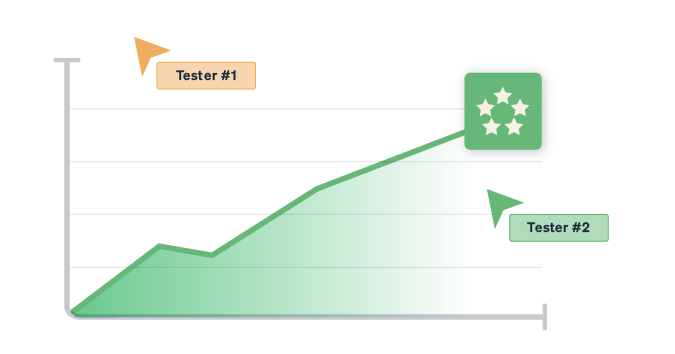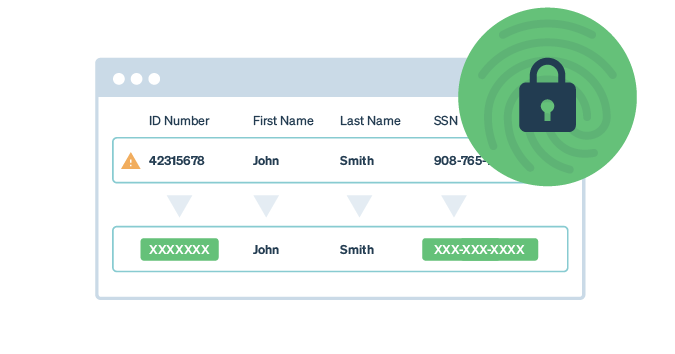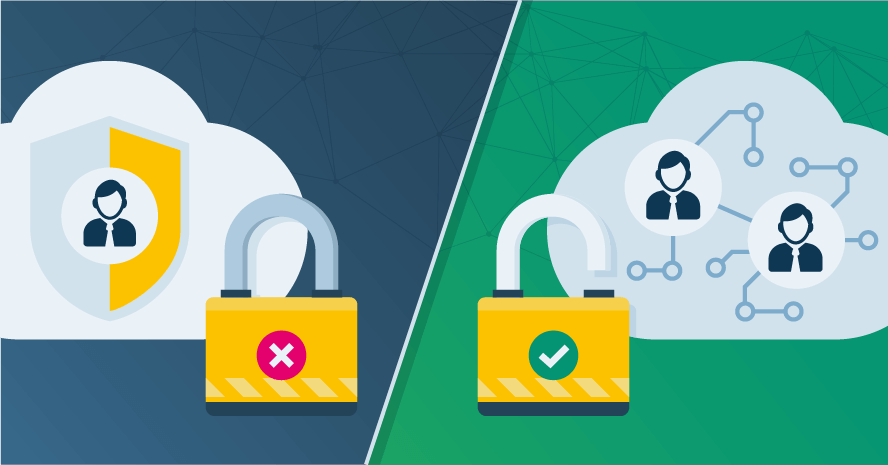Maintaining top-notch quality assurance is an ongoing challenge in industries with strict regulations. Companies must constantly improve their processes and maintain audit readiness to excel in this area. At the core of this effort is self-assessment, a crucial tool that goes beyond mere compliance.
By examining internal processes closely, companies can identify areas for improvement, ensure compliance, and be well-prepared for audits and inspections. Getting into good self-assessment habits keeps quality high and encourages continuous improvement, especially in industries where regulations are stringent.
In this article, we’ll explore the importance of self-assessment in driving continuous improvement and provide a comprehensive self-assessment checklist that you can use to kickstart these efforts on your own team.
Benefits of self-assessments in regulated industries
Conducting self-assessments offers a multitude of advantages that are invaluable for organizations operating in regulated industries. Let’s explore some of the key benefits:
Identifying areas for improvement
Self-assessments offer a structured framework for evaluating internal processes and practices. By conducting thorough assessments, organizations can identify areas needing enhancement or refinement. Whether streamlining workflows, optimizing resource allocation, or improving communication channels, self-assessments illuminate opportunities for improvement that might otherwise remain unnoticed.
Ensuring compliance
Adherence to regulatory standards is crucial in regulated industries, making it essential to regularly review and assess your quality assurance (QA) practices. These self-assessments involve evaluating the processes being followed and identifying gaps that may cause a lack of compliance or inefficiency in ensuring compliance.
By systematically reviewing internal protocols and procedures, companies can spot potential compliance gaps and take corrective action promptly. This proactive approach reduces the risk of non-compliance and cultivates a culture of regulatory diligence and continuous learning and improvement within the organization.
Maintaining audit-readiness
Audits and inspections are routine in regulated industries. Maintaining audit readiness is crucial for seamless regulatory compliance and business continuity. Self-assessments provide organizations with the necessary tools and insights to stay audit-ready.
By consistently evaluating their processes and documentation, companies can showcase transparency, traceability, and adherence to regulatory standards during audits. This builds confidence with regulatory authorities and reduces disruptions and potential penalties linked to audit recommendations.
The benefits of self-assessments extend far beyond mere compliance—by embracing self-assessment practices, organizations can enhance their operational efficiency, mitigate risks, and position themselves for success in regulated industries.
Key elements of self-assessments
To conduct effective self-assessment exercises, it’s essential to understand the key elements crucial for thorough evaluation and improvement of QA processes. Here are the three key components of self-assessments:
Traceability
Traceability in modern software development and testing involves establishing clear links between different process components like requirements, test cases, and defects. A robust traceability framework ensures that each test case directly corresponds to the relevant requirement or user story, enabling comprehensive coverage and facilitating impact analysis during changes.
For instance, a self-assessment may involve reviewing test cases to confirm their linkage to the appropriate requirement, defect, or user story, ensuring traceability across the testing lifecycle.
Test coverage
Test coverage measures the extent to which the software under test has been exercised by test cases. It encompasses both functional and non-functional aspects of testing to ensure thorough validation of the system’s behavior.
One scenario that we may want to consider here is test coverage for compliance-specific requirements like user audit logging and security measures. Self-assessment scenarios related to test coverage may include analyzing test suites to identify gaps in coverage, such as missing test cases for critical functionalities or edge cases. By addressing these gaps, organizations can enhance the effectiveness of their testing efforts and minimize the risk of undetected defects.
Disaster recovery planning
Disaster recovery planning involves preparing for and mitigating the impact of unforeseen events that could disrupt normal business operations. This includes developing strategies and protocols to recover data, systems, and services in the event of a disaster or outage. This should also include the restoration and continuity of sensitive and/or mission-critical information, such as database recovery.
Self-assessment scenarios for disaster recovery planning may involve reviewing and testing backup and recovery procedures, assessing the resilience of infrastructure components, and verifying the availability of contingency measures such as failover zones/regions by cloud service providers. By conducting such assessments, organizations can ensure readiness to respond effectively to potential disasters or disruptions, minimizing downtime and data loss.
Practical examples of self-assessment scenarios
Let’s explore some practical scenarios that organizations can use to conduct self-assessment exercises:
Traceability scenario
- Scenario: Review a sample set of test cases and corresponding requirements to ensure traceability.
- Objective: Validate that each test case is linked to the correct requirement or user story.
- Outcome: The review of the sample set of test cases and corresponding requirements aims to validate their traceability. If any discrepancies or missing links are identified during the review process, corrective action will be taken. This may involve updating the team’s working agreements or the definition of “done” to include any missing gaps or areas necessary for establishing comprehensive traceability.
Test coverage scenario
- Scenario: Identify a functionality of your software that is critical to satisfying a regulatory requirement. Analyze your test suites for tests covering this functionality.
- Objective: Identify areas with insufficient test coverage, such as critical functionalities or edge cases.
- Outcome: Develop additional test cases to address coverage gaps and enhance overall test coverage for the release. Simultaneously, add user stories to the backlog to address the identified gaps in test coverage. These user stories will serve to prioritize the creation of necessary test artifacts, ensuring comprehensive coverage without accumulating technical debt.
Disaster recovery planning scenario
- Scenario: Conduct a tabletop exercise to intentionally remove records from the operational database in a test environment, then attempt to restore the removed records in real-time using the organization’s disaster recovery plan.
- Objective: Test the readiness of backup and recovery procedures, infrastructure resilience, and contingency measures, ensuring that the time taken to perform each activity falls within the acceptable range. For example, operation database restoration may need to be executed in 5 minutes or less to be considered compliant.
- Outcome: Identify strengths and weaknesses in the disaster recovery plan and implement improvements to enhance preparedness for real-world disasters. Outcomes for improvement should directly translate into a newly named version or revision of your organization’s formal Disaster Recovery & Failover plan.
Additional self-assessment examples
In addition to the structured scenarios outlined above, here are some additional examples to further illustrate what a self-assessment looks like in practice:
Example #1
Pretend like you’re an auditor. Pick a random Jira story and see how easily you can identify the exact amount of testing, where it was tested, who did the testing, and the test results. If the test failed, is there a linked defect? Was the bug fixed, and was the fix validated with additional testing before deployment? Additionally, ensure that you can identify the exact date and release version this story was introduced into production environments.
Example #2
Pull a defect report drill-down. Are there still tests associated with closed defects? Do you have failed tests with no defect linked?
Example #3
Check the accessibility of testing and results for each release. For example, let’s assume you pushed a release last week. Can you see every test that was run for that release, the status, and when it was executed—including disaster recovery testing and performance testing? Can you see both manual and automated test results? Are they in one spot? Are they in different places, like multiple people’s drives or computers? Is everything centralized and easy to find?
Image: TestRail Enterprise gives administrators the ability to govern global and project roles and permissions with simple yet fine-tuned controls that ensure every user only has the access they need—from contractors to full-time staff.
Best practices to leverage self-assessment results for continuous improvement
Continuous improvement is a cornerstone of successful QA software processes in regulated industries. Leveraging self-assessment results effectively can propel organizations toward excellence by identifying areas for enhancement and driving iterative improvements. Here are some best practices for maximizing the impact of self-assessment results:
Establish a feedback loop and prioritize actionable insights
Create a structured feedback loop to capture insights and recommendations from self-assessment exercises. Prioritize actionable takeaways that have the most significant impact on product quality, regulatory compliance, and operational efficiency.
Set clear improvement goals and involve stakeholders
Define clear, measurable improvement goals based on self-assessment findings. Engage stakeholders from QA, development, product management, and other relevant departments to ensure alignment and collective ownership of improvement initiatives.
Encourage continuous learning and implement agile practices
Foster a culture of continuous learning and knowledge sharing within the QA team. Encourage exploration of emerging trends, industry best practices, and innovative testing methodologies. Additionally, adopt agile practices like iterative development, frequent releases, and CI/CD to facilitate rapid feedback cycles and adaptability.
Promote collaboration, communication, and embrace automation
Emphasize collaboration and communication within the QA team to implement improvements effectively. Promote open dialogue, regular meetings, and cross-functional collaboration to foster teamwork and shared accountability.
Embrace test automation to streamline repetitive tasks, increase efficiency, and allocate more time to higher-value activities.
Monitor progress, celebrate success, and learn from failures
Implement metrics and KPIs to monitor the effectiveness of improvement initiatives. Regularly assess progress against established goals and adjust strategies as needed. Celebrate successes and milestones achieved through continuous improvement efforts, while viewing failures as learning opportunities to encourage resilience and adaptability.
Leverage TestRail for streamlined self-assessments
If you’re constantly overwhelmed managing the chaos of your testing activities, you’ll never have time to assess and improve. Leveraging a centralized test management platform such as TestRail for both manual and automated testing with built-in defect integrations and robust reporting can make regular self-assessments a task you look forward to rather than a time-consuming chore.
Image: Manage, organize, and track your automated and manual test cases in one collaborative platform.
Learn about how TestRail supports Convercent, a renowned global provider of compliance software.
“My recent conversation with an auditor started with him selecting a Jira story ticket and asking me to walk him through our testing process, presenting evidence along the way. From the ticket, I clicked the test case link, which opened TestRail. I was then able to show the evidence required. The evidence proved that no new code goes out to production without being subjected to testing in multiple environments and on multiple browser types. The auditor was very happy.” -Kelli Jordan, Director of Quality Assurance
With TestRail’s scalable solution, Convercent optimizes QA processes, enhances interdepartmental communication, and attains critical industry certifications like HITRUST.
Self-assessment checklist: Continuous improvement and audit readiness in regulated industries
1. Preparing for self-assessment
- Define clear objectives and scope for the self-assessment
- Gather necessary documentation: test cases, requirements, process documentation
- Engage key stakeholders from QA, development, and relevant departments
- Review previous assessment results for insights and trends
2. Performing the self-assessment
- Validate traceability: Ensure all test cases are linked to corresponding requirements or user stories
- Evaluate test coverage: Identify gaps, especially for critical functionalities or edge cases
- Assess disaster recovery planning: Conduct tabletop exercises, verify infrastructure resilience
3. Acting on self-assessment results
- Address compliance gaps promptly; update processes to meet regulatory standards
- Implement improvement initiatives based on actionable insights prioritized from self-assessment findings
- Foster a culture of continuous learning and knowledge sharing within the QA team
- Implement agile practices to facilitate rapid feedback cycles and process adaptability
- Promote collaboration, communication, and automation to streamline processes and enhance efficiency
4. Leveraging self-assessment for continuous improvement
- Establish a feedback loop to capture insights and recommendations for ongoing improvement
- Define clear improvement goals based on self-assessment findings; involve stakeholders in the process
- Monitor progress using metrics and KPIs; celebrate successes and learn from failures
- Maintain documentation of findings, recommendations, and actions taken during the self-assessment process
- Foster a culture of continuous learning and adaptability within the QA team, encouraging knowledge sharing and exploration of emerging trends and best practices
- Utilize automation tools and centralized platforms, such as TestRail, to streamline self-assessment activities and documentation management
Ready to elevate your QA practices? Explore TestRail’s features in detail or get started with TestRail’s free trial today!



